Volume 9, Issue 2
Displaying 1-16 of 16 articles from this issue
- |<
- <
- 1
- >
- >|
-
2011 Volume 9 Issue 2 Pages 71-75
Published: 2011
Released on J-STAGE: May 21, 2020
Download PDF (1309K) -
2011 Volume 9 Issue 2 Pages 77-83
Published: 2011
Released on J-STAGE: May 21, 2020
Download PDF (922K) -
2011 Volume 9 Issue 2 Pages 85-92
Published: 2011
Released on J-STAGE: May 21, 2020
Download PDF (1071K) -
2011 Volume 9 Issue 2 Pages 93-99
Published: 2011
Released on J-STAGE: May 21, 2020
Download PDF (600K)
-
2011 Volume 9 Issue 2 Pages 101-106
Published: 2011
Released on J-STAGE: May 21, 2020
Download PDF (768K) -
2011 Volume 9 Issue 2 Pages 107-115
Published: 2011
Released on J-STAGE: May 21, 2020
Download PDF (1371K) -
2011 Volume 9 Issue 2 Pages 117-126
Published: 2011
Released on J-STAGE: May 21, 2020
Download PDF (377K) -
2011 Volume 9 Issue 2 Pages 127-135
Published: 2011
Released on J-STAGE: May 21, 2020
Download PDF (609K) -
2011 Volume 9 Issue 2 Pages 137-145
Published: 2011
Released on J-STAGE: May 21, 2020
Download PDF (1925K) -
2011 Volume 9 Issue 2 Pages 147-151
Published: 2011
Released on J-STAGE: May 21, 2020
Download PDF (461K) -
2011 Volume 9 Issue 2 Pages 153-159
Published: 2011
Released on J-STAGE: May 21, 2020
Download PDF (999K)
-
2011 Volume 9 Issue 2 Pages 161-166
Published: 2011
Released on J-STAGE: May 21, 2020
Download PDF (643K) -
2011 Volume 9 Issue 2 Pages 167-172
Published: 2011
Released on J-STAGE: May 21, 2020
Download PDF (1504K) -
2011 Volume 9 Issue 2 Pages 173-182
Published: 2011
Released on J-STAGE: May 21, 2020
Download PDF (3487K) -
2011 Volume 9 Issue 2 Pages 183-187
Published: 2011
Released on J-STAGE: May 21, 2020
Download PDF (513K) -
2011 Volume 9 Issue 2 Pages 189-195
Published: 2011
Released on J-STAGE: May 21, 2020
Download PDF (3928K)
- |<
- <
- 1
- >
- >|
